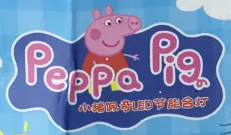With over 200 dedicated professionals, Beijing East IP has helped a full spectrum of clients – from startups to Fortune 500 corporations to domestic multinational companies – on their intellectual property issues in China.
Weekly China Trademark News Updates – March 29, 2021

Weekly China Trademark News Updates
March 29, 2021
1. China National Intellectual Property Administration initiates special action against bad faith filings
On March 15, 2021, the CNIPA issued the Special Action Plan for Cracking down on Malicious Preemptive Trademark Registration (“Action Plan”) specifically aims to crack down on trademark squatting, seeking unjustified interests, disrupting trademark registration management order, and actions causing significant adverse social impact. Some of the noticeable focal points in the Action Plan for foreign trademark owners are crack down on “squatting relatively famous public figure’s name, famous works or character name” and “squatting relatively famous or inherently distinctive trademark or other commercial marks, damage other’s prior rights.”
The complete Action Plan in Chinese can be found at 国家知识产权局关于印发《打击商标恶意抢注行为专项行动方案》的通知.
2. The Shanghai IP Court recognized the mark “Peppa Pig in Chinese (小猪佩奇)” as a well-known mark
Entertainment One UK Limited (“Entertainment One”) sued an individual CHEN and Shanghai Xunmeng Information Technology Co. Ltd. (“Xunmeng”) for trademark infringement. The Shanghai IP Court recognized the mark “Peppa Pig in Chinese (小猪佩奇)” as a well-known mark in favor of Entertainment One and ordered Xunmeng to pay damages of RMB 30,000 (USD 4,500).
| Infringing Mark |
 |
The Shanghai IP Court found that CHEN used “Peppa Pig in Chinese (小猪佩奇)” and the Peppa Pig design on its online store and on its infringing products, which constituted an imitation of Entertainment One’s mark “Peppa Pig in Chinese (小猪佩奇)” and infringed upon its trademark rights. In its findings, the court recognized the mark “Peppa Pig in Chinese (小猪佩奇)” as a well-known mark upon its findings that Entertainment One submitted sufficient evidence to support its request to recognized that the mark “Peppa Pig in Chinese (小猪佩奇)” has achieved well-known status in Class 9 in connection with animation and electronic publications (downloadable) and enjoyed high fame and good-well. The court ordered CHEN to pay compensation and reasonable costs to Entertainment One based on the nature, duration, scope, and consequence of the infringement. Regarding Xunmeng, the court found that Xunmeng had removed the infringing product links and without evidence proving its connection with CHEN, Entertainment One’s infringing claim against Xunmeng cannot be established.
For more information regarding well-known mark recognition, we have prepared the following well-known mark series for your reference.
- Well-Known Mark Recognition in China Part I
- Well-Known Mark Recognition in China Part II
- Well-Known Mark Recognition in China Part II
3. “B.duck Yellow Duck” won RMB 2.4 million in a trademark infringement case
The Shandong High Court ordered Lixun Group Co., Ltd. (“Lixun”) and other defendants to pay Duckling Clothing (Fujian) Co., Ltd. (“Duckling”) economic loss and reasonable cost of RMB 2.4 million for trademark infringement.
In its findings of trademark infringement, the court found that the yellow duck design work used in the Involved Mark was originally completed in 1948 and has reached relatively high fame through promotions. Duckling has been using the yellow duck design on shoes and clothing related goods as a commercial mark since at least 2019. And because the image used on the shoes and clothing goods by Duckling was nearly identical to the original work completed in 1948, the yellow duck’s fame can be reflected to the Involved Mark. Therefore, although the yellow duck design work was approved only in 2020 as a registered trademark, given the fame of its original work, the Involved Mark have certain fame since its registration and can be used to distinguish the source of goods. The first instance court erred in finding that the Involved Mark lacked distinctiveness and lack fame. Moreover, the alleged infringing goods are identical to the Involved Mark’s approved goods. The overall composition, appearances, and the overall appearance of the alleged infringing marks and the Involved Mark was similar. Despite there were differences between the alleged infringing marks and the Involved Mark, since the Involved Mark carried high fame and high distinctiveness, the relevant consumer would not be able to distinguish the alleged infringing mark with the Involved Mark. Lixun’s use of the infringing marks on the infringing goods would cause confusion as to the source of goods or that the two companies have affiliations. Lixun infringed upon Duckling’s trademark right.
Note, although Lixun claimed that it had obtained authorization from the copyright owner to use the duck design, the court found Lixun altered the duck design. Moreover, Lixun was only authorized to use the brand and the duck design was not registered as a trademark. Since Duckling had the exclusive rights to use the trademark, and the Involved Mark was highly similar to the original work, Lixun’s alteration of the duck design and prominently use the design as a trademark on its goods showed objective bad faith in free riding Duckling’s Involved Trademarks. Lixun also failed to submit evidence proving that it has been using the infringed mark on the infringing goods prior the Involved Mark’s application date. Accordingly, Lixun’s prior use rebuttal cannot be established.
Consider the fame of the yellow duck, the objective bad faith, nature, scope, and consequence of the infringement, the court ordered Lixun and other defendants to pay Duckling for economic loss and reasonable cost of RMB 2.4 million (USD 366,800).
The case number is (2020) Lu Min Zhong No. 3127.
 |
Follow us on LinkedIn Email: trademark@beijingeastip.com Tel: +86 10 8518 9318 | Fax: +86 10 8518 9338 Address: Suite 1601, Tower E2, Oriental Plaza, 1 East Chang An Ave., Dongcheng Dist., Beijing, 100738, P.R. China |
-
ABOUT US
-
PRACTICES
-
NEWS & EVENTS
-
Other Links
-
Contact Us
- info@beijingeastip.com
- +86 10 8518 9318
- +86 10 8518 9338


